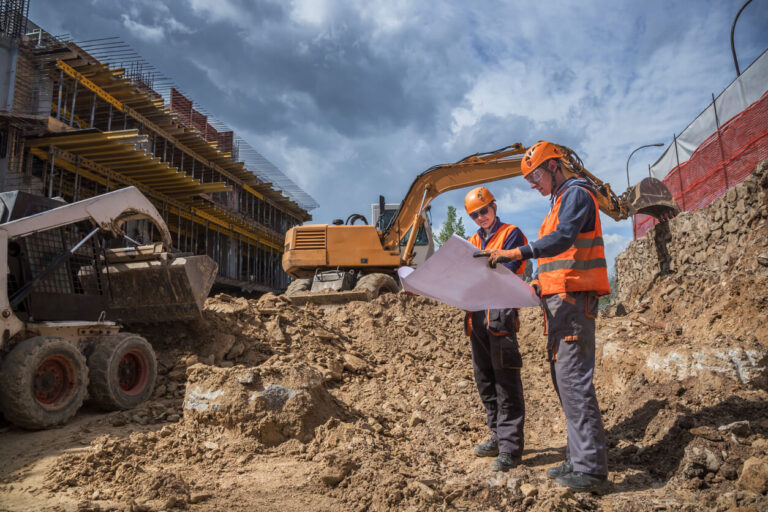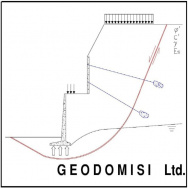Maximizing the Potential of Soil Mechanics: The Importance of Geotechnical Engineering in Construction Projects
[edit] Forward
As a geotechnical engineer, I have seen the importance of soil mechanics in construction projects first-hand. Without a proper understanding of the soil and its properties, construction projects can face a multitude of issues such as foundation failures, settlement, and landslides. Geotechnical engineering is the branch of civil engineering that deals with the study of soil mechanics and its applications to construction projects. In this article, I will discuss the role of geotechnical engineering in construction projects, the importance of soil mechanics, geotechnical investigation and analysis, geotechnical design considerations, types of geotechnical engineering projects, challenges faced by geotechnical engineers, advancements in geotechnical engineering technology, and the future of geotechnical engineering.
[edit] Introduction to geotechnical engineering
Geotechnical engineering is a subfield of civil engineering that deals with the behaviour of earth materials such as soil, rock, and groundwater. It involves the study of the physical properties of these materials and their interactions with structures and the environment. Geotechnical engineers play a critical role in the design, construction, and maintenance of infrastructure projects such as buildings, bridges, roads, and dams.
[edit] The role of geotechnical engineering in construction projects
Geotechnical engineering plays a crucial role in construction projects by providing information about the soil and rock conditions at the site. This information is used to design foundations, retaining walls, and other structures that can support the loads placed upon them. Geotechnical engineers also evaluate the risks associated with natural hazards such as landslides, earthquakes, and floods, and provide recommendations for mitigating these risks.
Geotechnical engineers work closely with other professionals in the construction industry such as architects, structural engineers, and contractors to ensure that the design and construction of the project are safe, efficient, and cost-effective. They also play a key role in the environmental impact assessment of construction projects by evaluating the potential impact on the soil, groundwater, and surrounding ecosystems.
[edit] Importance of soil mechanics in geotechnical engineering
Soil mechanics is the branch of geotechnical engineering that deals with the behaviour of soil under different loading conditions. It is important to understand the properties of soil such as its strength, compressibility, and permeability to design safe and efficient structures. Soil mechanics also helps geotechnical engineers to evaluate the potential for soil erosion, landslides, and other natural hazards that can affect the stability of structures.
Soil mechanics is used to design foundations for buildings, bridges, and other structures. It is also used to design retaining walls, slopes, and embankments. The properties of soil can vary widely from site to site, and even within a single site. Therefore, it is important to conduct geotechnical investigations to obtain accurate information about the soil conditions at the site.
[edit] Geotechnical investigation and analysis
Geotechnical investigation is the process of collecting and analysing data about the soil, rock, and groundwater conditions at a site. This information is used to design safe and efficient structures and to evaluate the potential for natural hazards such as landslides, earthquakes, and floods. Geotechnical investigation involves a combination of field and laboratory testing.
Field testing involves collecting soil and rock samples from the site and performing tests to determine the properties of the soil and rock. Some common field tests include standard penetration tests, cone penetration tests, and vane shear tests. Laboratory testing involves analysing the soil and rock samples to determine their physical and mechanical properties.
Geotechnical engineers use the data obtained from the geotechnical investigation to evaluate the suitability of the site for construction, to design foundations and other structures, and to develop recommendations for mitigating risks associated with natural hazards.
[edit] Geotechnical design considerations
Geotechnical design involves the process of designing safe and efficient structures that can withstand the loads placed upon them. Geotechnical engineers use the data obtained from the geotechnical investigation to design foundations, retaining walls, slopes, and embankments.
Foundations are designed to support the loads from the structure and to transfer these loads to the soil. The type of foundation used depends on the soil conditions at the site. For example, shallow foundations are used for buildings on stable soil, while deep foundations such as piles and drilled shafts are used for buildings on soft or unstable soil.
Retaining walls are designed to hold back soil or rock and to prevent landslides. The type of retaining wall used depends on the soil and rock conditions at the site. For example, gravity retaining walls are used for small slopes, while reinforced concrete retaining walls are used for larger slopes.
Slopes and embankments are designed to provide stability to the soil and to prevent landslides. The slope angle and the type of reinforcement used depend on the soil and rock conditions at the site.
[edit] Types of geotechnical engineering projects
Most Geotechnical engineering projects can range from small residential buildings to large infrastructure projects such as bridges, tunnels, and dams. Some common types of geotechnical engineering projects include:
- Foundations for buildings and structures
- Retaining walls and slope stabilisation
- Embankments for roads and railroads
- Dams and levees
- Tunnels and underground structures
- Landfills and waste disposal sites
- Geothermal energy systems
[edit] Challenges faced by geotechnical engineers
Geotechnical engineering can be a challenging field due to the variability of soil and rock conditions at different sites. Geotechnical engineers must take into account the uncertainty and variability of soil and rock properties in their designs and recommendations. They must also consider the potential for natural hazards such as landslides, earthquakes, and floods.
Another challenge faced by geotechnical engineers is the need to balance safety, efficiency, and cost-effectiveness in their designs. They must design structures that are safe and efficient while also considering the cost of construction and maintenance.
[edit] Advancements in geotechnical engineering technology
Advancements in technology have greatly improved the field of geotechnical engineering in recent years. New testing methods and equipment have made it easier to obtain accurate data about the soil and rock conditions at a site. Computer modelling and simulation tools have made it easier to design structures and evaluate the potential for natural hazards.
Geotechnical engineers are also using new materials such as geosynthetics and soil stabilisation techniques to improve the performance of structures and to mitigate the risks associated with natural hazards.
[edit] The future of geotechnical engineering
The future of geotechnical engineering looks bright as the demand for infrastructure projects continues to grow around the world. As technology continues to advance, geotechnical engineers will have access to new tools and materials that will enable them to design safer and more efficient structures.
In addition, the need for sustainable construction practices will drive the development of new geotechnical engineering solutions that minimise the environmental impact of construction projects.
[edit] Conclusion
In conclusion, geotechnical engineering is a critical field that plays a crucial role in construction projects. The study of soil mechanics and its applications to construction projects is essential for designing safe and efficient structures. Geotechnical investigation and analysis, geotechnical design considerations, and the use of new technology and materials are all important factors in the success of geotechnical engineering projects. As the demand for infrastructure projects continues to grow, the future of geotechnical engineering looks bright.
[edit] Related articles on Designing Buildings
- Appointing consultants.
- Alluvium.
- Artificial ground.
- Backfilling.
- Basal layer.
- Bearing capacity.
- Bedrock.
- Brown earth.
- Civil engineer.
- Civil engineering course essentials.
- Contaminated land.
- Engineered soil.
- Engineer.
- Geophysical survey.
- Geotechnical engineering.
- Ground improvement techniques.
- Ground investigation.
- Ground conditions.
- Ground improvement techniques.
- Ground investigation.
- How to become an engineer.
- Hydraulically treated soils in residential construction (BR 513).
- Insitu testing of soils.
- Made ground.
- Non-plastic soil.
- Overburden.
- Peat.
- River engineering.
- Site surveys.
- Soil profile.
- Soil quality.
- Soil report.
- Soil structure.
- Soil survey.
- Soil texture.
- Soil wetness.
- Subsoil.
- Structural engineer.
- Sump pump.
- Topsoil.
- Water engineering.
- Wellpoint.
Featured articles and news
Key points for construction at a glance with industry reactions.
Functionality, visibility and sustainability
The simpler approach to specification.
Architects, architecture, buildings, and inspiration in film
The close ties between makers and the movies, with our long list of suggested viewing.
SELECT three-point plan for action issued to MSPs
Call for Scottish regulation, green skills and recognition of electrotechnical industry as part of a manifesto for Scottish Parliamentary elections.
UCEM becomes the University of the Built Environment
Major milestone in its 106-year history, follows recent merger with London School of Architecture (LSE).
Professional practical experience for Architects in training
The long process to transform the nature of education and professional practical experience in the Architecture profession following recent reports.
A people-first approach to retrofit
Moving away from the destructive paradigm of fabric-first.
International Electrician Day, 10 June 2025
Celebrating the role of electrical engineers from André-Marie Amperè, today and for the future.
New guide for clients launched at Houses of Parliament
'There has never been a more important time for clients to step up and ...ask the right questions'
The impact of recycled slate tiles
Innovation across the decades.
EPC changes for existing buildings
Changes and their context as the new RdSAP methodology comes into use from 15 June.
Skills England publishes Sector skills needs assessments
Priority areas relating to the built environment highlighted and described in brief.
BSRIA HVAC Market Watch - May 2025 Edition
Heat Pump Market Outlook: Policy, Performance & Refrigerant Trends for 2025–2028.
Committing to EDI in construction with CIOB
Built Environment professional bodies deepen commitment to EDI with two new signatories: CIAT and CICES.
Government Grenfell progress report at a glance
Line by line recomendation overview, with links to more details.
An engaging and lively review of his professional life.
Sustainable heating for listed buildings
A problem that needs to be approached intelligently.
50th Golden anniversary ECA Edmundson apprentice award
Deadline for entries has been extended to Friday 27 June, so don't miss out!
CIAT at the London Festival of Architecture
Designing for Everyone: Breaking Barriers in Inclusive Architecture.
Mixed reactions to apprenticeship and skills reform 2025
A 'welcome shift' for some and a 'backwards step' for others.





























